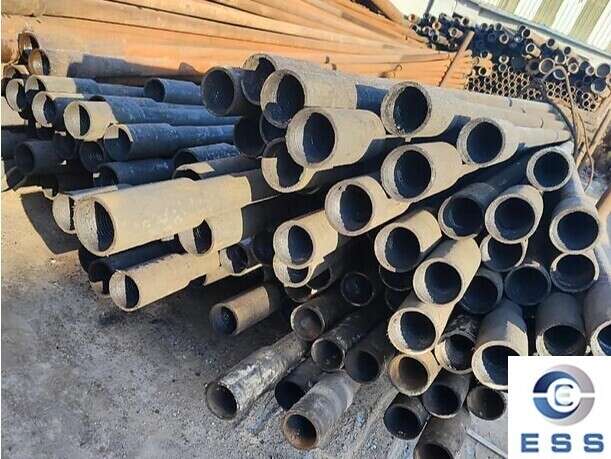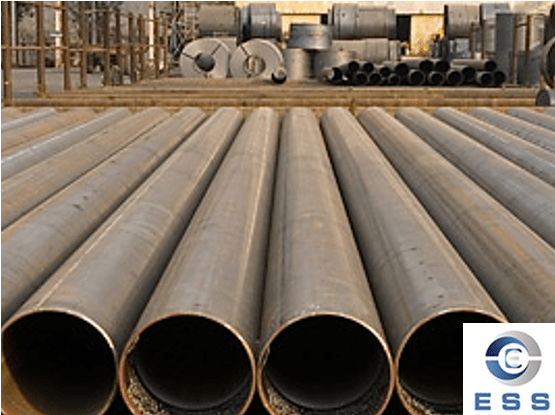
Consider the strength of the drill
pipe
1. Shallow drilling (depth less than 500
meters)
For shallow drilling depths, the formation
pressure and friction are relatively small. Generally, a drill pipe with
slightly lower strength can be selected. For example, ordinary carbon steel
drill pipes can usually meet the requirements. The yield strength of this type
of drill pipe may be between 300-500MPa, which is enough to withstand the
pressure of shallow formations. At the same time, its cost is relatively low,
and it is more suitable for some small building foundation drilling or shallow
geological exploration projects.
2. Medium drilling (depth 500-2000 meters)
As the drilling depth increases, the
formation pressure and friction also increase accordingly. At this time, a
drill pipe with higher strength, such as an alloy steel drill pipe, is
required. The yield strength of an alloy steel drill pipe can reach about
700-900MPa. This type of drill pipe can effectively resist the lateral pressure
of the formation and prevent the drill pipe from bending or breaking during
drilling. It is often used in the exploration of oil and gas in the middle
layer or in the drilling of medium-sized mines.
3. Deep drilling (depth greater than 2000
meters)
For ultra-deep drilling, the drill pipe has
to withstand huge pressure and tension. It is necessary to use high-strength
and high-toughness drill pipes. For example, some drill pipes made of special
alloy steel have a yield strength of more than 1000MPa. Moreover, this type of
drill pipe also needs to have good fatigue resistance, because in the long-term
deep drilling process, the drill pipe will be subjected to countless tensile
and torsion cycles. In projects such as deep-sea oil drilling or ultra-deep geothermal
well drilling, this high-performance drill pipe is indispensable.
Pay attention to the size and weight of
the drill pipe
1. Shallow drilling
Small-sized drill pipes can be used for
shallow drilling, such as drill pipes with an outer diameter of 50-73mm. The
smaller size makes the drill pipe lighter and easier to operate and transport.
At the same time, when drilling in shallow formations, the required lifting
force and torque of lighter drill pipes are relatively small, and general
drilling equipment can meet the requirements. For example, in the drilling of
some agricultural irrigation wells, this small-sized drill pipe can efficiently
complete the task.
2. Medium drilling
When the drilling depth increases to a
certain extent, the drill pipe size needs to be appropriately increased to
ensure its stability and strength. Usually, drill pipes with an outer diameter
of 73-127mm are more suitable. These drill pipes are moderately heavy and can
provide sufficient drilling pressure without placing too much burden on the
drilling equipment. Moreover, a reasonable size can ensure that there is enough
space inside the drill pipe for the circulation of drilling fluid, which is
essential for cooling the drill bit and carrying cuttings. In the drilling of
medium-layer oil wells or medium-depth water wells, such a drill pipe size is a
common choice.
3. Deep drilling
For deep drilling, large-sized drill pipes
are necessary. Drill pipes with an outer diameter of 127-219mm can withstand
the huge pressure of deep formations. However, large-size drill pipes also mean
increased weight, which requires drilling equipment to have higher lifting
capacity. When selecting the size of the drill pipe, the weight distribution of
the entire drill string must also be considered to ensure the stability of the
drilling process. In deep-sea oil drilling and other projects with greater depth,
the instability of the drill string can be effectively avoided by reasonably
selecting the size and weight of the drill pipe.
Consider the connection method and
sealing of the drill pipe
1. Shallow drilling
In shallow drilling, a simple threaded
connection drill pipe can usually meet the requirements. This connection method
is easy to operate, and the tightness of the connection can also ensure that
the drilling fluid will not leak in large quantities under the pressure of the
shallow formation. For example, the common triangular threaded connection drill
pipe is widely used in some shallow geotechnical engineering drilling.
2. Medium drilling
With the increase of drilling depth and
pressure, a connection method with better sealing and higher connection
strength is required. For example, a trapezoidal thread connection or a joint
with a special sealing structure is used. These connection methods can
effectively prevent the leakage of drilling fluid under high pressure, and also
ensure that the drill pipe will not be disconnected under large torque and
tension. In the mid-layer drilling of oil and gas, this high-performance
connection method is very important to ensure the smooth progress of drilling
operations.
3. Deep drilling
For deep drilling, the connection method
and sealing of the drill pipe are crucial. Usually, joints with multiple
sealing structures are used, such as a combination of metal-to-metal seals and
elastic seals. This joint can ensure the effective circulation of drilling
fluid and the reliable connection of the drill pipe in the deep formation
environment of high temperature and high pressure. For example, in the drilling
of ultra-deep geothermal wells, the high temperature and high pressure
environment puts extremely high demands on the connection and sealing of the
drill pipe. Only by using advanced sealing and connection technologies can the
success of drilling be guaranteed.
Read more: Size of Drill Pipe or How Many Types of Drill Pipe Threads Are There?













 Eastern Steel Manufacturing Co.,Ltd not only improve product production and sales services, but also provide additional value-added services. As long as you need, we can complete your specific needs together.
Eastern Steel Manufacturing Co.,Ltd not only improve product production and sales services, but also provide additional value-added services. As long as you need, we can complete your specific needs together.










